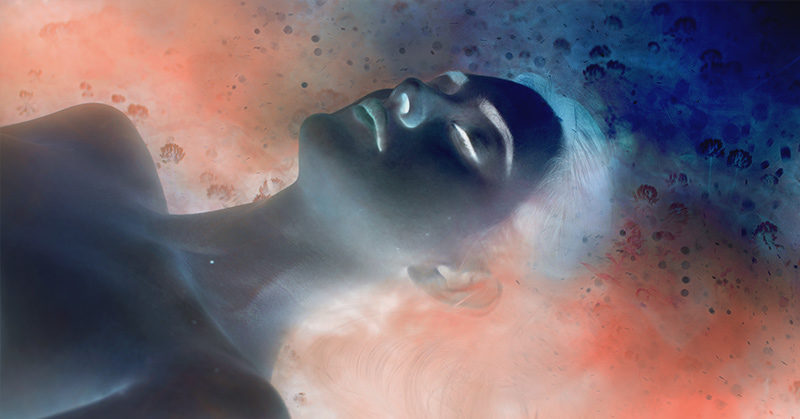For millennia, humans have been fascinated and intrigued by dreams. We have questioned where they come from and what causes them, and have attempted to derive meaning from their seemingly random occurrence.
Civilizations throughout history have attached spiritual meaning to dreams and tried to explain them as having supernatural origins, however today we tend to find meaning behind dreams within the context of our own lives.
However, recently researchers have managed to take that a step further. In one massive dream study, they have determined that not only do the events of our everyday lives impact our dreams but that our dreams are actually a continuation of our reality.
The Continuity Hypothesis of Dreams
The continuity hypothesis of dreams suggests that the content of dreams is, for the most part, continuous with the concepts and concerns of the dreamer when they are awake.
Earlier theories by theorists like Freud and Jung suggested that dreams reflected the hidden wishes or compensatory emotional strategies of the dreamer. Calvin Hall, however, was the first researcher to argue that the content of dreams simply reflected the daily concerns and ideas of the dreamer, rather than some more complex psychodynamic theory.
Hall demonstrated this through the creation of standardized dream content scoring inventories, which showed that the most common items appearing in dreams were not bizarre images, but rather ordinary social interactions between the dreamer and people in their daily life [1].
The researchers involved in the new dream study explained that research has repeatedly supported this hypothesis, and that most dreams are, in fact, a continuation of whatever was happening to the dreamer in everyday life.
“It turns out that everyday life impacts dreaming (e.g. anxiety in life leads to dreams with negative affect) and vice versa (e.g. dreaming impacts problem-solving skills),” they said [2].
How do Researchers Interpret Dream Reports?
Hall and Van de Castle system is one of the most well-regarded systems for interpreting dream reports. Using dream reports, therapists can help patients look for clues, symbols, and structures that might relate to another part of their lives and help them derive meaning from their dreams.
The Hall and Van de Castle system codifies dreams using two types of categories: theoretical or empirical. A theoretical category is derived from a theory of personality and then applied to a dream report. These categories could, for example, be derived from Jung’s theory of archetypes.
An empirical category, on the other hand, is developed through trial-and-error through reading numerous dream reports. Examples of this type of category could be “friends”, “aggressive interactions”, “physical activities”, “misfortunes”, or “successes” [3].
Because this system involves manually sifting through dream reports to identify these different elements, it can be slow and extremely time-consuming. For this reason, sleep scientists are constantly looking for an algorithm that can automatically recognize and annotate dream content within the Hall and Van de Castle system.
Read: Having Weird Dreams Since The Pandemic Began? You’re Not Alone
The Dream Study
In this new dream study, lead by computer scientist Alessandro Fogli from Roma Tre University in Italy, researchers came up with a new method of tracking and annotating dream reports on a massive scale, allowing them to analyze a set of 24 thousand dreams from a massive public database of dreams called DreamBank.
The team designed a tool that automatically scores dream reports by operationalizing the Hall and Van de Castle system.
“We validated the tool’s effectiveness on hand-annotated dream reports … and tested what sleep scientists call the ‘continuity hypothesis’ at this unprecedented scale.” [4]
Focusing In
The processing tool simplified the Hall and Van de Castle system by focusing three main dimensions of dreams: characters, social interactions, and emotions words. The team argued that these are the most important dimensions of dreams when it comes to interpreting their meaning, since they define the basic plot of the dream- who was present, which actions were performed, and which emotions were expressed [4].
Their system is not perfect, and when compared to hand-written notes of dream reports by dream experts, their results matched only about three quarters of the time. This, however, is still a promising number, and suggests that future technological developments like this could pave the way for new breakthroughs in dream research.
Dreams are a Continuation of Everyday Life
Their results also support the hypothesis that dreams are a continuation of the events of the dreamer’s everyday life, and the researchers say that their reports contained various “statistical markers” that lined up with what the dreamers likely experienced in everyday life [2].
Despite this fairly significant breakthrough, we still don’t know exactly what our dreams really mean or where they come from, but this new dream study is one more step toward making it easier to understand our dreams and quantify important aspects of them.
With the continual development of technology such as this, scientists are getting closer and closer to being able to bridge the gap between real life and dreaming [2].
Keep Reading: MIT Tests ‘Dream Incubation’ Device That Manipulates The Content of People’s Dreams
Sources
- https://www.psychologytoday.com/au/blog/dream-catcher/201409/the-continuity-hypothesis-dreams-more-balanced-account
- https://www.sciencealert.com/giant-dream-tracking-experiment-hints-where-our-strange-nightly-visions-come-from
- https://link.springer.com/chapter/10.1007/978-1-4899-0298-6_2
- https://royalsocietypublishing.org/doi/10.1098/rsos.192080

